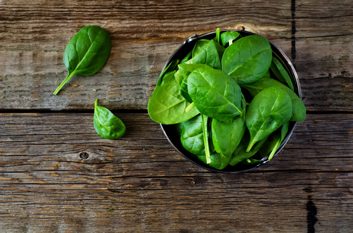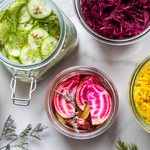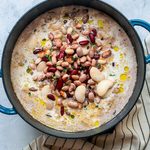Dietitian-approved ideas for eating better
This year, ditch the restrictive diet resolutions, and instead, opt for small, attainable healthy eating goals

Source: Best Health magazine, January/February 2015
What I like about New Year’s resolutions is that they’re an opportunity for us to reflect on our old habits, try new things and figure out how to achieve our best health. To stay on track, set realistic goals with specific actions. For example, if your goal is to lose 10 pounds, set mini-goals to lose one pound a week. If you resolve to eat better, break it down into specific activities. Here are three easy food resolutions to help you ring in 2015!
Eat more veggies
You probably already know that vegetables are Mother Nature’s superheroes, protecting us from heart disease, Type 2 diabetes and cancer. But interesting research from the Journal of Epidemiology and Community Health also suggests that the more veggies and fruits you eat, the less likely you are to die at any age. This effect was especially strong with vegetables. Overall, aim for seven to 10 servings of vegetables and fruits every day.
Try this: Pick a theme vegetable every week. Focus on a seasonal item or a different-coloured veggie. Or for fun, play alphabet vegetable: For week one, pick up some arugula for a salad; for week two, buy a bunch of broccoli and make a stir-fry; for week three, go crazy for cauliflower. You get the idea. (If you’re stuck on the letter ‘N’, try napa cabbage.) Cook up your veggies in different ways for a change of taste ‘ try roasting brussels sprouts, barbecuing corn and steaming carrots. When you’ve reached the end of the alphabet, start all over again for the last half of the year.
Add more protein at breakfast and lunch
Most of us tend to get enough protein at dinner but fall short at breakfast and lunch. Health professionals currently suggest getting about 25 grams of protein at each meal, not only to maximize our muscle-building potential but also for satiety and weight management. Sometimes it can be difficult to imagine what 25 grams of protein looks like.
Try this: Each of these adds up to about 25 grams of protein: 1/4 cup (60 mL) nuts with 3/4 cup (175 mL) Greek yogurt, a peanut butter sandwich on whole wheat bread with a glass of fortified soy beverage or a green salad with 1/2 cup (125 mL) cooked diced meat, poultry or fish or 1 cup (250 mL) edamame beans and a sprinkle of pumpkin seeds.
Up your dairy intake
Think about these three Ms for bone health: Maximize bone mass during the teen years, maintain bone mass during adulthood and minimize bone loss as we get older. Getting enough calcium and vitamin D, along with regular physical activity, helps to build strong bones and lowers the risk of osteoporosis.
Try this: Cook oatmeal, grains and soups with milk instead of water. Swap your afternoon coffee for a caffe latte or a tea steeped with milk. Read the nutrition labels and look for yogurts with vitamin D. If you don’t drink milk, find a plant-based beverage that has been fortified with both calcium and vitamin D.
Remember that resolutions are not all or nothing. Don’t beat yourself up if you slip ‘ it happens to the best of us. Keep looking forward and focus on making small, positive changes that are going to last a lifetime




